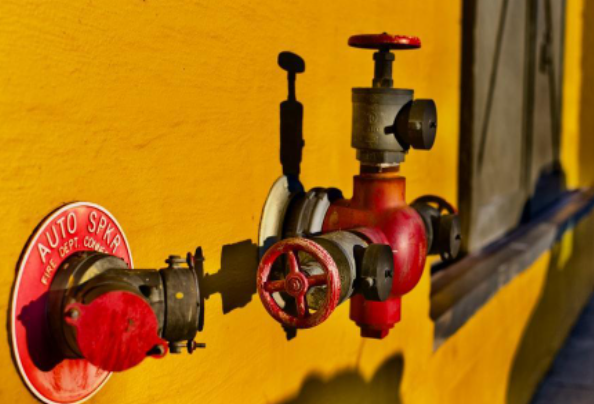Piping is one of the essential processes of home construction; it is responsible for providing water supply to the taps. In piping, several valves are being used that many people do not know of. It is better to know the valves of different types to help them operate in an emergency. Also, you can choose an automatic valve that suits your requirement best as there are many types available.
Automation assists in various activities and processes without physical. Among the most common is in the linear motion valve carrying them out. These are valuable as they can help us control the flow in the piping systems, which needs a severe amount of precision control or fail-safe emergency shutoff. There are countless benefits of the automated valves and using several different valves mentioned in this article.
What Is Valve?
There are chances you may already know what the valves are, but still, let us revise. A valve is the device responsible for regulating, controlling, or directing the fluid flow by opening, closing, or partially obstructing the fluid flow. In other words, it is a device responsible for maintaining the pressure and the flow of the fluid within the processor system.
What Are The Different Types Of Valves?
The different valve types mentioned in this article are used in piping depending on different needs and requirements. The cost of the valve in the system is usually up to 20-30% of the overall piping cost. The price of the following size and types of pipes can vary from the one you get from the store.
For instance, if you happen to choose the ball valve over the butterfly valve for the same purpose, it can potentially be more costly. It is why choosing the right type of valve is essential.
Gate Valve
It is among the most common valves used in any process plant. The linear motion valve used to start or stop the fluid flow is in the linear motion valve. In services, you will see that these are either fully open or closed positions.
Gate valves assist in most fluid services such as fuel gas, lube oil, hydrocarbon, etc. the remarkable thing about it is that it offers a suitable shutoff.
Plug Valve
Plug valves are the quarter-turn rotary motion valve that uses a cylindrical or tapered plug for starting and stopping the flow. The disk in the plug shape comes with a passage for passing flow. Many people use them as the on-off valves, providing bubble-tight shutoff. You can use it in a vacuum for high-pressure and temperature applications.
Butterfly Valve
A butterfly valve is the quarter-turn rotary motion valve used for stopping, starting, and regulating the flow. It has a short circular body and is suitable for extensive valve application because of the lightweight, compact design that does not demand much more space than other valves. Many people are usually used on larger pipe sizes in which the ball or plug valve would get large, heavy, and costly.
Needle Valve
The needle valve design is similar to the globe valve, with the significant difference being in the sharp needle-like disk. These are designed in a way so that they can provide precise control of the flow in the small diameter piping systems. The needle valve got its name due to the sharp-pointed conical disc and the matching seat.
Globe Valve
It helps to regularly start and stop the fluid flow. These are needed in which control of the flow is required, and leak tightness is also necessary. It offers a better shutoff than the gate valve and is more costly than the gate valve. The flow will enter the lower hemisphere from one side and then goes up through the seat and exit via the outlet on the opposing side of the northern hemisphere. These are perfect for both on-off and throttling uses.
Globe valves are the preferred choice for accurate flow control, and 3-way globe valves are usually used to mix the media from 2 inlets and direct the blend via an outlet port.
Ball Valve
These are quarter-turn 2-way ball valves which are widespread process type control valves. Ball valves are used for shutoff or isolation of the system’s component and loop inside the system.
The basic construction of the ball valve comprises a ball that works as the obstructer. It is in between the two cup-shaped seals known as seats. Generally, the ball comes with a bore straight through it.
Angle Seat Valves
It is the 2-position valve that is equipped with a built-in pneumatic actuator. It can be the spring return or double-acting. The obstructor is a type of plug that enters the valve at an angle that sits in an angled seat molded into the flow path of the vale. The plug retracts out of the flow path when open. It makes the angle seat valve one of the highest flow fast-acting valves with the lowest pressure drop.
Angle seat valve is the most suitable alternative to the ball valve in most on-off applications. The incredible thing about them is that they are faster acting, do not cost much, and are durable with long life.
Coaxial Valves
It is the 2-position valve with the ability to be pneumatically or electrically actuated. The electric version of these uses an electromagnetic coil vs. a spring. The pneumatic version of it uses air pressure in both directions. They use a shuttle-type obstructor, which helps the media travel when open. It moves from place to place for performing the function, either on-off or diverting the flow to the proper outlet.
Coaxial Valves come with a more extensive flow path than solenoid valves but do not come close to being the complete port valve. You can get them in different styles of coaxial valves. Two of them are the VA series and the pneumatic or electric coaxial.
Conclusion
These are some of the best valves that can be used depending on the situation and goal. Using the well-suited valve is highly essential as it can play a critical role in the efficiency of the flow and precision control of the water.
































